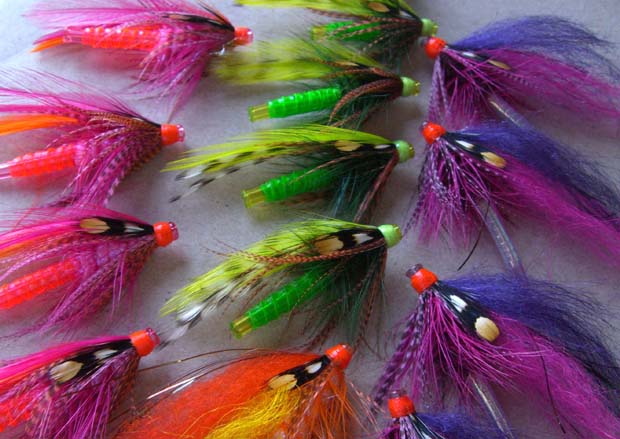Tube flies have many advantages over conventional tied to the hook flies
[dropcap]T[/dropcap]he number one advantage of tube flies is actually reason enough too adopt them: they are much, much easier to cast.
Tube flies can be rigged with a smaller trailer hook – if legal where you fish.
The same fly can be used to fish surface, a specific water column or bottom by using different types of tubes.
Tube flies outlast conventional flies many times over
The hook can be quickly repositioned to fish up or down.
Tube flies are much easier to store, keep on the ready – no hook to foul. Hooks can be kept in their own packets with sizes and styles you may use on a specific outing.
An offset hook can be used on larger tube flies intended for bigger game fish, which will increase hook-ups, but smaller tube flies with an offset hook will tend to continually rotate.
If a hook is bent or the point is damaged you don’t lose a fly, you just change the hook.
 With the fly away from the hook, your hook to landing ratio will improve
With the fly away from the hook, your hook to landing ratio will improve
A tube fly will breakaway or ride up the leader when a fish is on. The advantage there is the fly doesn’t get mauled – lives for another day. And the fish can’t use the weight of the fly as leverage on a head shake.
Tying notes
Use a razor to cut plastic tube lengths. Scissors create a ragged edge. You can burn collars (ridge or flared ends) at each end of the tubing with a tea lamp. Metal tubes come sized.
You don’t need a special vise to hold the tube in place. Just buy an adapter.
The one thing that happens when you begin tying is that the tube rotates and thread can’t be anchored, but that’s because you didn’t tighten down both screws enough.
You can use all kinds of hooks when tying tube flies: long shank, short shank, up eye, down eye and offset (on big game flies). On small flies the hook rotates.


